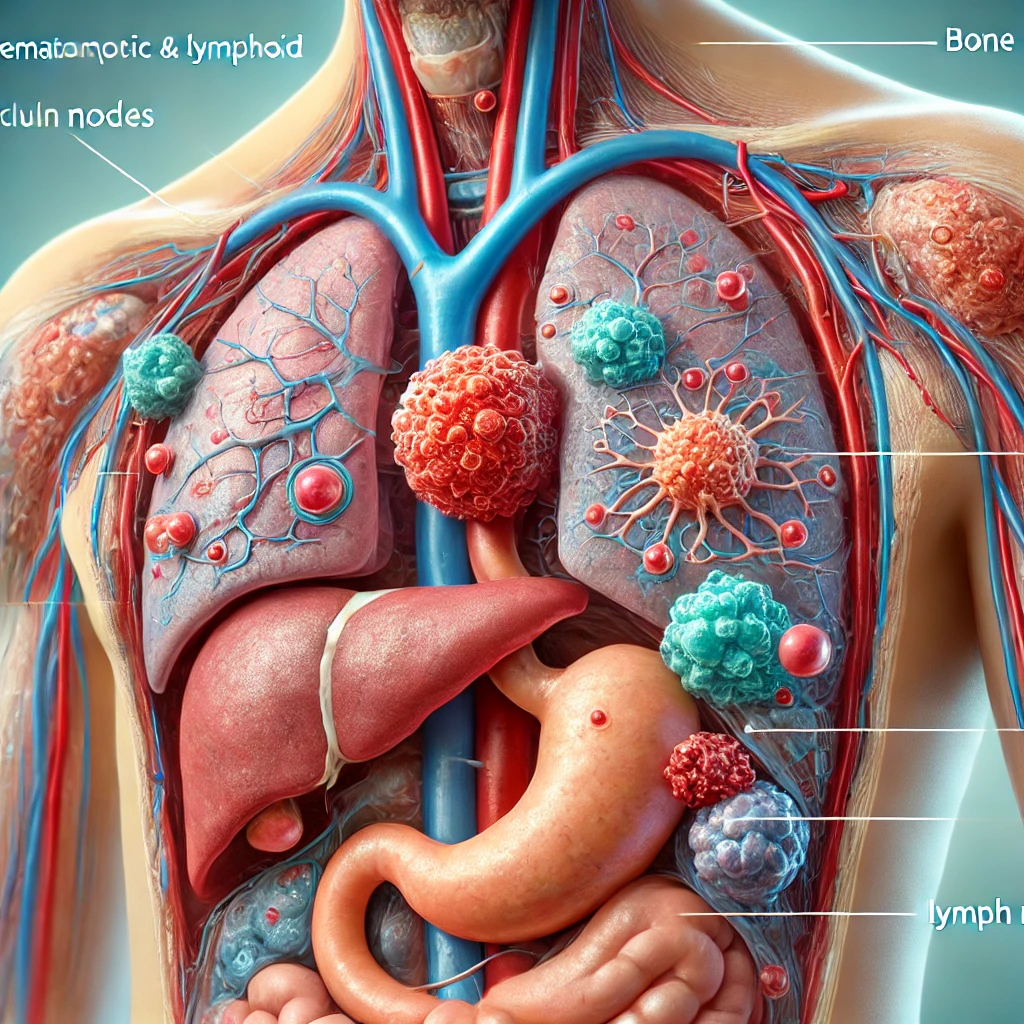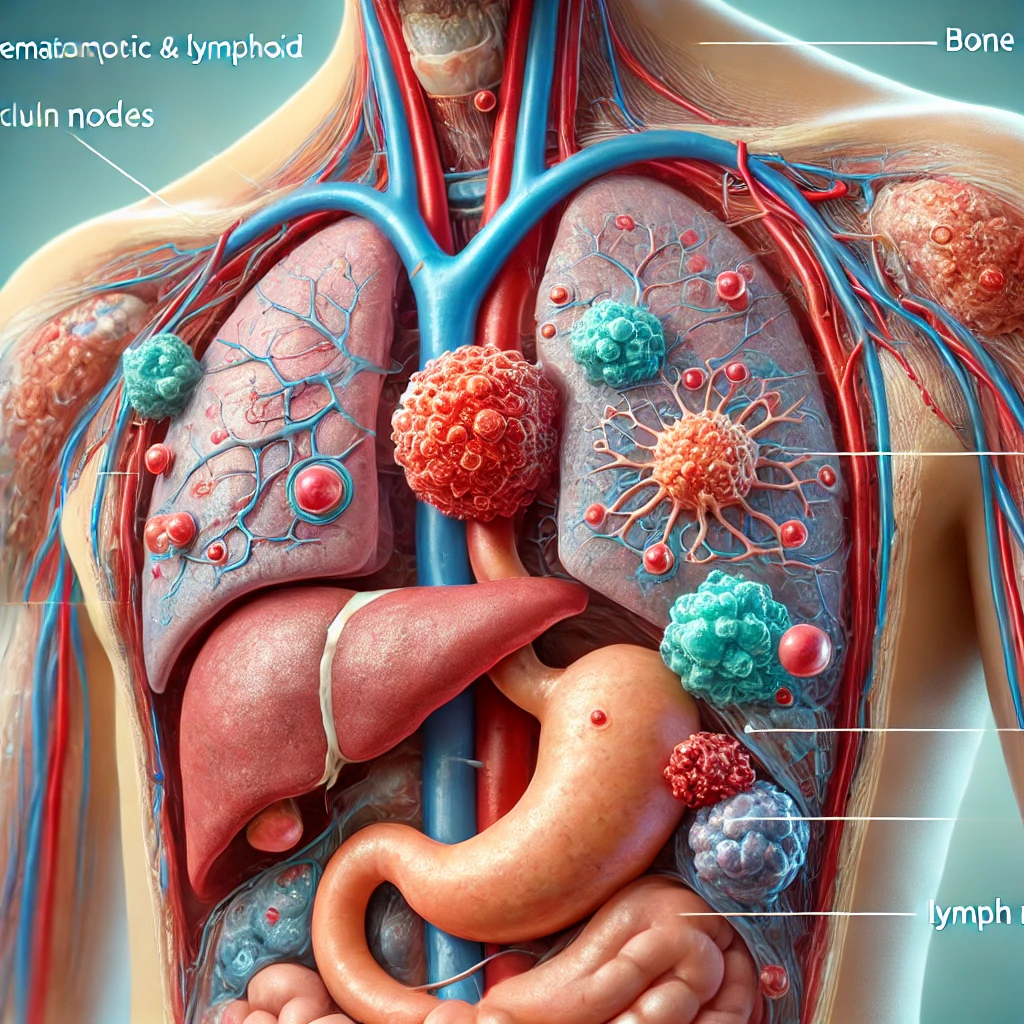Tumors of the hematopoietic and lymphoid tissues, often referred to as blood cancers, are a diverse group of malignancies that originate in the bone marrow, lymph nodes, and other parts of the immune system. These cancers disrupt the normal production and function of blood cells, leading to serious health consequences if left untreated.

What Are Hematopoietic and Lymphoid Tumors?
Hematopoietic and lymphoid tumors primarily affect the cells responsible for blood formation and immunity. These include white blood cells, red blood cells, platelets, and the tissues that support their production.
Types of Hematopoietic and Lymphoid Tumors
1. Leukemias
Leukemia affects the blood and bone marrow. It is categorized into four main types:
- Acute Myeloid Leukemia (AML): Rapid-growing cancer affecting myeloid cells.
- Chronic Myeloid Leukemia (CML): Slower-growing and often detected in adults.
- Acute Lymphoblastic Leukemia (ALL): Common in children, affecting lymphoid cells.
- Chronic Lymphocytic Leukemia (CLL): Affects lymphocytes and is more common in older adults.
2. Lymphomas
Lymphomas target the lymphatic system, which includes the lymph nodes and spleen.
- Hodgkin Lymphoma: Characterized by the presence of Reed-Sternberg cells.
- Non-Hodgkin Lymphoma: A diverse group of lymphoid cancers affecting various cell types.
3. Multiple Myeloma
This cancer affects plasma cells in the bone marrow, leading to weakened bones and reduced immunity.
Common Symptoms of These Tumors
Symptoms can vary depending on the type but may include:
- Persistent fatigue.
- Swollen lymph nodes in the neck, armpits, or groin.
- Unexplained weight loss.
- Frequent infections or fevers.
- Bruising or bleeding easily.
- Bone pain or fractures.
Causes and Risk Factors
1. Genetic Mutations
Alterations in DNA can disrupt normal blood cell production, leading to cancer.
2. Exposure to Chemicals
Prolonged exposure to benzene, often found in industrial settings, increases risk.
3. Prior Radiation or Chemotherapy
Cancer survivors may face higher risks of developing secondary blood cancers.
4. Family History
A family history of blood cancers increases susceptibility.
5. Immune System Suppression
Conditions like HIV or organ transplants requiring immunosuppressants raise the likelihood of blood cancers.
Diagnosis of Hematopoietic and Lymphoid Tumors
1. Blood Tests
- Complete Blood Count (CBC): Identifies abnormal levels of blood cells.
- Blood Smear: Detects abnormal shapes or sizes of cells.
2. Bone Marrow Biopsy
A small sample of bone marrow is taken to examine under a microscope.
3. Imaging Tests
- CT or PET Scans: Check for the spread of cancer in lymph nodes or other organs.
4. Molecular Tests
Identify specific genetic mutations to guide targeted therapies.
Treatment Options
1. Chemotherapy
- Uses drugs to kill or slow the growth of cancer cells.
- Often combined with other treatments.
2. Radiation Therapy
- Targets specific areas to shrink tumors or eliminate cancer cells.
3. Bone Marrow Transplant
- Replaces damaged bone marrow with healthy cells, often from a donor.
4. Targeted Therapy
- Medications designed to attack specific cancer cell mutations.
5. Immunotherapy
- Boosts the immune system to fight cancer more effectively.
Managing Life with Blood Cancer
Living with hematopoietic and lymphoid tumors requires a supportive approach:
- Balanced Diet: Focus on nutrient-rich foods to strengthen immunity.
- Regular Exercise: Helps maintain physical and mental health.
- Emotional Support: Therapy or support groups can aid mental well-being.
For more resources, visit medicaltimes.io.
Top 10 FAQs About Tumors of Hematopoietic and Lymphoid Tissues
1. What is the difference between leukemia and lymphoma?
Leukemia affects the blood and bone marrow, while lymphoma targets the lymphatic system.
2. Can these cancers be cured?
Some types, like certain lymphomas, can be cured with timely treatment. Others can be managed effectively.
3. Are these cancers hereditary?
Some cases have genetic links, but most are not directly inherited.
4. What are the early signs to watch for?
Symptoms like fatigue, swollen lymph nodes, or frequent infections warrant medical attention.
5. How are bone marrow transplants performed?
Healthy cells are infused into the patient’s bloodstream, replacing the damaged marrow.
6. Can children develop blood cancers?
Yes, types like acute lymphoblastic leukemia (ALL) are more common in children.
7. How long does chemotherapy treatment last?
Treatment duration varies but can range from months to years depending on the cancer type.
8. What is the role of genetic testing in treatment?
Genetic testing helps tailor targeted therapies for better outcomes.
9. Are there alternative treatments?
Complementary therapies, like acupuncture or meditation, may help manage side effects but should not replace medical care.
10. How can I support a loved one with blood cancer?
Offer emotional support, accompany them to appointments, and educate yourself about their condition.
